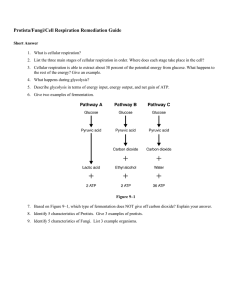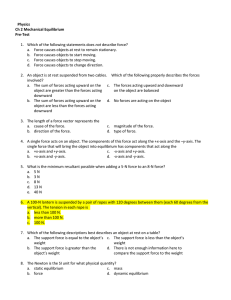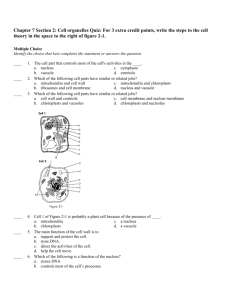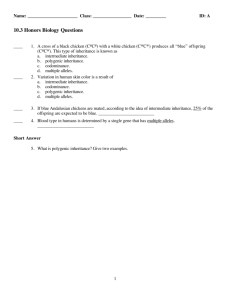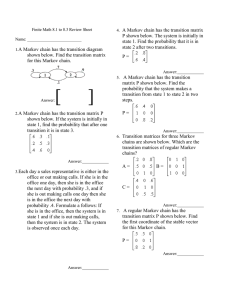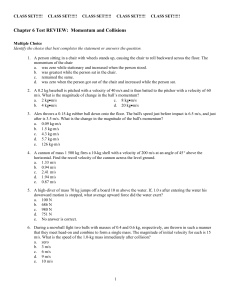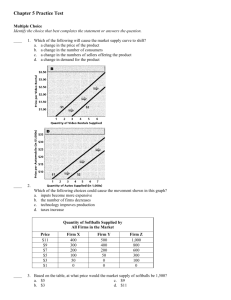Chapter 5 Review Worksheet
advertisement
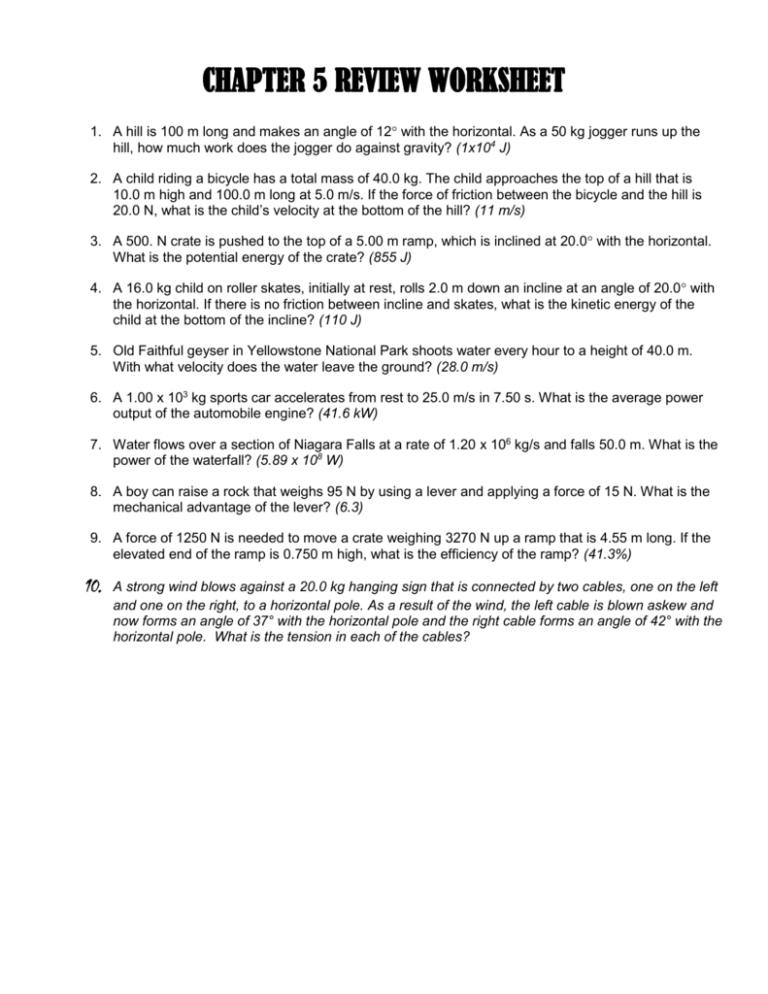
CHAPTER 5 REVIEW WORKSHEET 1. A hill is 100 m long and makes an angle of 12° with the horizontal. As a 50 kg jogger runs up the hill, how much work does the jogger do against gravity? (1x104 J) 2. A child riding a bicycle has a total mass of 40.0 kg. The child approaches the top of a hill that is 10.0 m high and 100.0 m long at 5.0 m/s. If the force of friction between the bicycle and the hill is 20.0 N, what is the child’s velocity at the bottom of the hill? (11 m/s) 3. A 500. N crate is pushed to the top of a 5.00 m ramp, which is inclined at 20.0° with the horizontal. What is the potential energy of the crate? (855 J) 4. A 16.0 kg child on roller skates, initially at rest, rolls 2.0 m down an incline at an angle of 20.0° with the horizontal. If there is no friction between incline and skates, what is the kinetic energy of the child at the bottom of the incline? (110 J) 5. Old Faithful geyser in Yellowstone National Park shoots water every hour to a height of 40.0 m. With what velocity does the water leave the ground? (28.0 m/s) 6. A 1.00 x 103 kg sports car accelerates from rest to 25.0 m/s in 7.50 s. What is the average power output of the automobile engine? (41.6 kW) 7. Water flows over a section of Niagara Falls at a rate of 1.20 x 106 kg/s and falls 50.0 m. What is the power of the waterfall? (5.89 x 108 W) 8. A boy can raise a rock that weighs 95 N by using a lever and applying a force of 15 N. What is the mechanical advantage of the lever? (6.3) 9. A force of 1250 N is needed to move a crate weighing 3270 N up a ramp that is 4.55 m long. If the elevated end of the ramp is 0.750 m high, what is the efficiency of the ramp? (41.3%) 10. A strong wind blows against a 20.0 kg hanging sign that is connected by two cables, one on the left and one on the right, to a horizontal pole. As a result of the wind, the left cable is blown askew and now forms an angle of 37° with the horizontal pole and the right cable forms an angle of 42° with the horizontal pole. What is the tension in each of the cables? CHAPTER 5 REVIEW WORKSHEET Answer Section PROBLEM 1. ANS: 1 10 J Given Solution PTS: 1 2. ANS: 11 m/s Given Solution DIF: IIIB OBJ: 5-1.4 PTS: 1 3. ANS: 855 J DIF: IIIC OBJ: 5-2.3 DIF: IIIB OBJ: 5-2.6 Given Solution PTS: 1 4. ANS: 110 J Given Solution PTS: 1 5. ANS: 28.0 m/s DIF: IIIB OBJ: 5-3.3 DIF: IIIB OBJ: 5-3.3 Given Solution PTS: 1 6. ANS: 41.6 kW Given Solution PTS: 1 7. ANS: 589 MW DIF: IIIC OBJ: 5-4.2 DIF: IIIC OBJ: 5-4.2 DIF: IIIA OBJ: 7-4.4 DIF: IIIB OBJ: 7-4.4 Given Solution PTS: 1 8. ANS: 6.3 Given Solution PTS: 1 9. ANS: 43.1% Given Solution PTS: 1 10. ANS: Work problem here. PTS: 1


